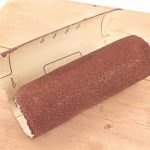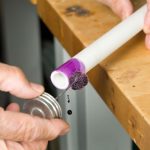Advantages of Gluing Plexiglass to Metal
Contents
- 1 Advantages of Gluing Plexiglass to Metal
- 2 What Glue Should You Use for Plexiglass to Metal?
- 3 How to Prepare Plexiglass and Metal Before Gluing
- 4 Making Sure the Glue is Compatible with Both Materials
- 5 How to Glue Plexiglass to Metal
- 6 How to Apply Glue to Plexiglass and Metal
- 7 Curing the Glue on the Bonded Materials
- 8 Tips for a Stronger Bond Between Plexiglass and Metal
- 9 Cleaning Up After Gluing
- 10 Conclusion
Gluing plexiglass to metal is a great way to create a strong and durable bond. It’s easy to use and cost-effective, making it an ideal choice for DIY projects. Here are some of the advantages of gluing plexiglass to metal:
- Stronger than other adhesives – Gluing plexiglass to metal results in a strong bond that won’t easily break or come apart.
- Versatile – This adhesive can be used for a variety of applications, from furniture and displays to signage.
- Easy to use – You don’t need any special tools or skills, making it great for beginners.
- Cost-effective – Gluing plexiglass to metal is an affordable option, as you don’t need expensive tools or materials.
- Durable – The bond created by this adhesive is tough and can withstand wear and tear over time.
- Waterproof – The bond created by gluing plexiglass to metal is waterproof, making it perfect for projects that will be exposed to moisture.
If you’re looking for an easy and cost-effective way to create a strong bond between two materials, gluing plexiglass to metal is the perfect solution.
It’s strong, versatile, easy-to-use, cost-effective, durable, and waterproof.
What Glue Should You Use for Plexiglass to Metal?
A two-part epoxy is the perfect solution! It bonds strongly, creating a waterproof seal that will last.
When choosing an epoxy, make sure it’s designed specifically for plastic and metal. This will give you the strongest possible bond. Look for one with a long curing time too; this gives you plenty of time to adjust the pieces before the glue sets.
Choose an epoxy that’s non-toxic and safe for use around food items or in enclosed spaces. With these tips, you can find the perfect glue for your project.
How to Prepare Plexiglass and Metal Before Gluing
Ready to glue plexiglass and metal together? It’s not as hard as it seems, but there are some key steps you need to take.
Start by prepping the surfaces. Sand down any rough edges with sandpaper with a grit of 220 for the best results.
Wipe away any dust or debris with a clean cloth.
If there’s residue from previous gluing attempts, use an adhesive remover to get rid of it.
Finish up by using a wax or grease remover on both surfaces to ensure they’re clean before applying glue.
Making Sure the Glue is Compatible with Both Materials
With the right glue, it’s a breeze! When choosing a glue, it’s important to make sure that it is compatible with both materials.
Different types of glue may react differently when combined with different materials, so make sure you do your research.
For example, some glues are designed specifically for use with glass and metal, while others are designed for plastic and metal.
Additionally, some glues may not be suitable for use with certain metals, such as aluminum or brass.
To ensure that your project turns out just how you want it, check the manufacturer’s instructions and recommendations before starting.
How to Glue Plexiglass to Metal
Gather the Necessary Materials
Before beginning the process of gluing plexiglass to metal, it is important to have all the necessary materials.
These include plexiglass, metal, a clean cloth, rubbing alcohol, adhesive, and a putty knife or other similar tool. Be sure to double-check that you have everything before you start.
Clean the Metal Surface
Using a clean cloth and rubbing alcohol, carefully wipe down the metal surface where you will be attaching the plexiglass.
This will help ensure that the adhesive sticks properly and that there are no dirt or debris particles that could interfere with the bond.
Apply Adhesive
Using a putty knife or other similar tool, apply a thin layer of adhesive to the metal surface.
Make sure to spread it evenly and cover the entire area where you want to attach the plexiglass. Allow it to dry for at least 15 minutes before moving on to the next step.
Place Plexiglass on Metal Surface
Once the adhesive has had time to dry, carefully place the plexiglass on the metal surface.
Make sure that it is lined up correctly and that you do not move it around too much while pressing it down into place.
Secure with Clamps
Finally, use clamps or other similar tools to secure the plexiglass in place while it dries completely.
Allow it to sit overnight before testing out its strength and durability. With these steps, your plexiglass should now be firmly attached to your metal surface!
How to Apply Glue to Plexiglass and Metal
It’s essential to use the right type of glue. Epoxy, superglue, and acrylic adhesives are all suitable for this task. Before you start, make sure the surfaces are clean and dry.
Use a small brush or cotton swab to evenly apply the glue over both surfaces. Make sure you cover all areas where you want them to be bonded together.
Then let it dry completely before continuing with your project.
Curing the Glue on the Bonded Materials
Bonding materials together is the way to go. But don’t forget about curing the glue. It’s an essential step for ensuring that your bond lasts.
Curing times depend on the type of glue used, but generally, it takes 24 hours for most glues to cure completely.
To speed up the process, you can use a heat gun or a UV light; just follow the manufacturer’s instructions when using either of these methods.
Once cured, always inspect your work. Check that there are no gaps or weak spots in your bond and that everything has been properly glued together.
Tips for a Stronger Bond Between Plexiglass and Metal
Gluing plexiglass to metal can be a tricky task. But with the right supplies and techniques, it can be done successfully! Here are seven tips to help you get the job done.
- First, use a strong adhesive that is rated for both metal and plexiglass, such as epoxy or super glue.
- Second, clean both surfaces with rubbing alcohol before applying any adhesive. This will create a stronger bond between the two materials.
- Third, clamps are essential when gluing plexiglass to metal to hold the two materials together while the glue cures.
- Fourth, depending on which type of adhesive you use, it could take several hours or even days for the glue to fully cure and reach its maximum bonding strength.
- Fifth, avoid using too much glue, as this can cause warping and bubbling.
- Only apply enough glue to cover the entire surface area of the two materials being glued together.
- Sixth, consider using a primer before applying any adhesive. A primer can help create an even stronger bond between the plexiglass and metal by filling in any imperfections or gaps between them.
- Finally, applying heat to both surfaces before gluing can help create an even stronger bond between them by melting away any oils or dirt that might be present on either surface, which can weaken the bond if left untreated.
Cleaning Up After Gluing
Are you tackling a project that involves plexiglass and metal? It’s important to know how to clean up after using glue. Here’s what you need to do:
First, let the glue cure. Then, use a damp cloth or paper towel to remove any leftover glue from the surfaces. Don’t forget to throw away used rags, as they may have been exposed to the glue and could be hazardous.
If any stubborn spots of glue won’t come off easily, use a plastic putty knife or other non-abrasive tools to scrape them away.
Finally, give your plexiglass and metal surfaces a polished finish by wiping them down with a soft cloth and mild detergent.
Conclusion
Gluing plexiglass to metal is a great way to create a strong and durable bond. It’s easy to use, cost-effective, and can be used for a variety of projects.
To ensure the best results, it’s important to choose the right type of glue, clean both surfaces before applying adhesive, and let the glue cure completely before putting your project into use.
Additionally, you should consider using a primer or applying heat before gluing to create an even stronger bond between the two materials.
Lastly, don’t forget about cleaning up after using glue; it’s essential for achieving sparkling results. With these tips in mind, you’ll be sure to have success when gluing plexiglass to metal.






